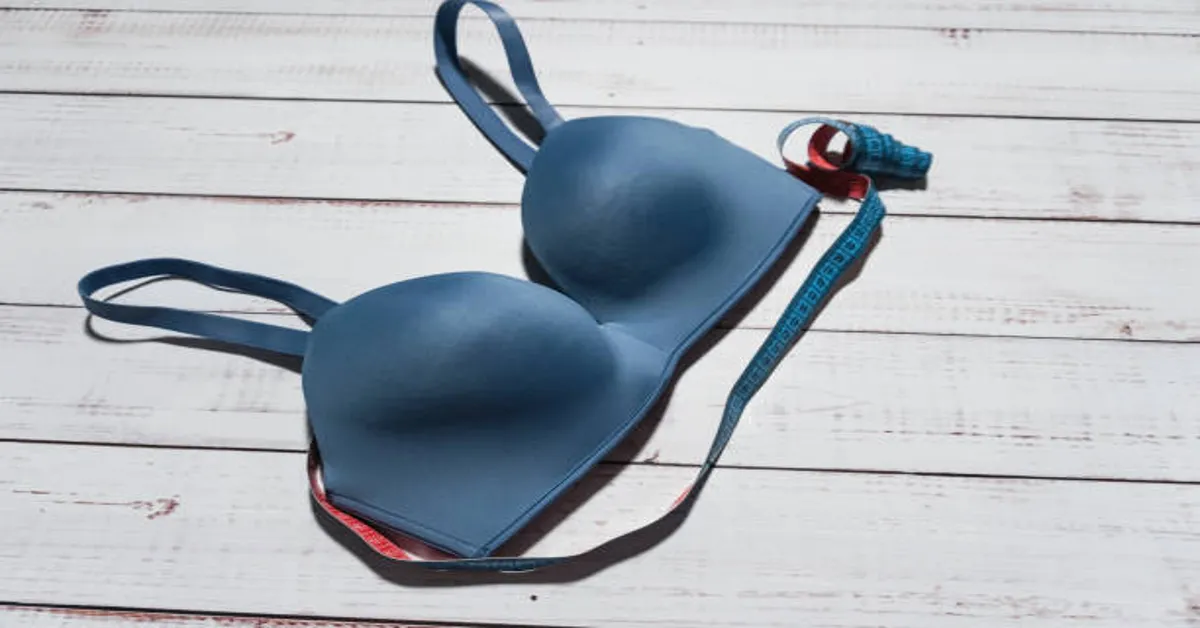When it comes to women’s lingerie, one of the most common yet often misunderstood bra sizes is the B cup. Many women wear it, some aspire to it, and others may grow out of it with time. Despite being a middle-ground cup size, it comes with its own unique characteristics, challenges, and style considerations. Understanding what a B cup truly represents is essential for anyone who wishes to find the perfect bra fit, feel confident in their body, or simply understand lingerie sizing better.
In this comprehensive 3000-word article, we will dive deep into everything about the B cup—its measurements, how it compares to other cup sizes, what types of bras work best, health and comfort considerations, and the myths surrounding it. Whether you are someone who currently wears a B cup, are in the process of shopping for bras, or simply want to gain a better understanding of lingerie sizing, this guide will provide clarity in a healthy, body-positive, and informative way.
What Does a B Cup Mean?
Bra sizes are a combination of two parts: the band size (the number, e.g., 32, 34, 36) and the cup size (the letter, e.g., A, B, C). The band refers to the measurement around the ribcage, just under the bust, while the cup size is determined by the difference between the bust measurement at the fullest point and the band measurement.
A B cup generally means there is about a 2-inch difference between the bust measurement and the band measurement. This makes the breasts moderately projected—neither too flat nor too full—and gives them a balanced appearance. It is important to note, however, that the actual breast volume of a B cup will vary significantly depending on the band size.
For example:
- A 32B bra size has a smaller breast volume than a 36B.
- The cup letter alone doesn’t define volume—band size must be factored in.
This is why bra professionals often say, “Cup sizes are relative.” A B cup on a petite frame can look fuller, while on a broader frame, it may appear smaller.
Measurement Guide for a B Cup
To truly understand what makes a B cup, let’s look at the standard measurement difference method:
| Band Size | Bust Measurement | Difference | Cup Size |
|---|---|---|---|
| 32 | 34 inches | 2 inches | B cup |
| 34 | 36 inches | 2 inches | B cup |
| 36 | 38 inches | 2 inches | B cup |
| 38 | 40 inches | 2 inches | B cup |
As the table shows, the defining factor of a B cup is always a 2-inch difference, but the overall bust circumference increases with the band size.
How B Cup Compares to Other Cup Sizes
Understanding how a B cup stands in relation to other sizes helps in visualizing its place in the spectrum of breast volumes.
- A Cup vs. B Cup: An A cup is typically a 1-inch difference between bust and band, making it smaller and less projected than a B-cup. Women transitioning from A to B-cup often notice more roundness and cleavage options.
- B Cup vs. C Cup: A C cup has a 3-inch difference, making it fuller. While a B-cup offers moderate projection, a C cup starts to provide more volume and curves.
- B Cup vs. AA Cup: An AA cup has less than a 1-inch difference, often associated with very small breast volume. Compared to AA, a B-cup represents a noticeable step up in projection and shape.
This positioning makes B-cups highly versatile—they are not too small, nor overly full, making them a balanced middle ground.
Common Challenges for B-Cup Wearers
Even though B cups are versatile, women who wear them may face unique challenges.
- Finding the Right Fit
- Many women wear the wrong band size, which can cause the cup to feel too loose or too tight.
- B-cups, when paired with too large a band, may gape at the top.
- Limited Cleavage in Certain Styles
- While push-up bras can enhance cleavage, some low-cut dresses may not naturally create dramatic cleavage with a B-cup without supportive padding.
- Perceived Size vs. Actual Size
- On petite women, B-cups may appear fuller. On broader torsos, they may look smaller, leading to misconceptions about breast size.
- Transition Sizes
- Many women grow into or out of B-cups during puberty, pregnancy, or weight changes, making it a transitional size in many life stages.
Best Types of Bras for B-Cup
Not every bra style works equally well for every cup size. B-cups enjoy a wide variety of options because of their balanced volume.
Recommended Bra Styles
- T-Shirt Bras: Perfect for everyday wear, these provide smoothness under clothing and fit B-cups well without gaping.
- Push-Up Bras: Enhance cleavage for women who want a fuller look. Particularly helpful for B cups that sit on the smaller side.
- Bralettes: Comfortable and stylish, bralettes are ideal for B-cups since they provide enough support without requiring heavy padding.
- Balconette Bras: Offer lift and a rounded shape, working beautifully for moderate breast sizes like B.
- Sports Bras: B-cups typically do not require extreme compression, making light to medium-support sports bras sufficient.
Style Tips for B Cup Women
Clothing and lingerie choices can make a big difference in how B-cups appear.
- Necklines: Scoop necks, sweetheart necklines, and V-necks flatter B-cups by creating a gentle curve without requiring push-up padding.
- Fabric Choices: Light fabrics such as silk, cotton, and jersey drape nicely without overwhelming moderate breast volume.
- Padded vs. Unpadded: Depending on the look desired, B-cup wearers can choose lightly padded for a natural look or push-up for enhanced curves.
- Braless Options: Some women with B-cups feel comfortable going braless under certain outfits due to moderate size and minimal sagging risk.
Health and Comfort Considerations
Breast health and comfort are as important as aesthetics.
- Support Needs: B-cups generally do not require heavy-duty support, but wearing the right band size is crucial to prevent discomfort.
- Back Pain: Unlikely to be caused by a B-cup, unlike larger sizes.
- Sagging Concerns: Sagging is influenced more by genetics, skin elasticity, and age than cup size. However, wearing supportive bras can help maintain shape over time.
- Sports and Activity: B-cup breasts typically experience less bounce during exercise, but a supportive sports bra still helps in minimizing discomfort.
Myths About B Cups
There are many misconceptions around B cups that deserve to be clarified.
- “B cups are small.”
- Not always. Depending on the band size, a B-cup can hold more volume than some Cs in smaller bands.
- “B cups don’t need bras.”
- While support needs are lighter, bras still help with shaping, comfort, and maintaining breast health.
- “B-cups can’t create cleavage.”
- With the right push-up or balconette bra, cleavage is absolutely possible.
- “All B-cups look the same.”
- Breast shape varies widely—two women wearing the same size may have completely different breast shapes.
Psychological and Cultural Perspectives
Breast size often carries cultural weight. In many societies, B-cups are considered “average” or “moderate,” which can have both positive and negative effects on self-perception.
- Positive Perceptions: Seen as balanced, easy to style, and versatile. Many fashion designers create sample sizes around B-cups.
- Negative Perceptions: Some may feel overshadowed by cultural ideals of larger cup sizes. However, body positivity movements have increasingly highlighted the beauty of all sizes, including B-cups.
Ultimately, confidence is not about the letter on a bra tag but about how one feels in their body.
Evolution of B Cup Through Life Stages
Breast size is not static, and many women experience B-cups at different times in life.
- Puberty: Many girls reach B-cup size in their teenage years, though growth often continues.
- Pregnancy and Breastfeeding: Temporary size increases may move women from B to larger cups.
- Weight Changes: Gaining or losing weight can affect breast tissue volume.
- Menopause: Hormonal changes may also impact size, sometimes reducing volume back to B-cup.
Table: Pros and Cons of B-Cup
| Pros | Cons |
|---|---|
| Versatile bra style options | Cleavage less dramatic naturally |
| Light support needs | Can gape with wrong band size |
| Comfortable during activity | Sometimes perceived as “too small” culturally |
| Easy to go braless in some outfits | Volume varies widely across bands |
Conclusion
The B cup is one of the most versatile, balanced, and widely worn bra sizes. Neither too small nor too large, it offers women a comfortable middle ground that allows for fashion flexibility, comfort, and a healthy body image when approached positively. By understanding what a B-cup truly represents—beyond just a letter—women can make better choices in lingerie, embrace their natural shape, and feel confident in their skin.
ALSO READ: Best Bras for Small Busts: Comfort, Shape, and Style
FAQs
1. Is a B cup considered small or average?
A B cup is generally considered average, but its appearance depends on body frame and band size.
2. Can B cup breasts create cleavage?
Yes, with the right push-up or balconette bra, B cups can create noticeable cleavage.
3. Do B cups need supportive bras?
While support needs are lighter than larger cups, proper-fitting bras still ensure comfort and breast health.
4. How does a 32B differ from a 36B?
Though both are B cups, the 36B has more breast volume because cup size changes with band size.
5. Do B cups sag with age?
All breasts can sag over time, but genetics, skin elasticity, and lifestyle play a bigger role than cup size alone.









